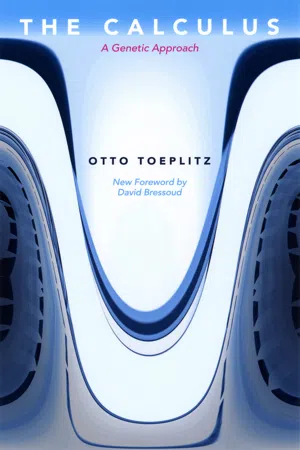Physics
Velocity and Position by Integration
Velocity and position by integration refer to the process of determining an object's velocity and position by integrating its acceleration and velocity, respectively, over a given time interval. This involves using calculus to find the area under the curve of the acceleration function to obtain the velocity function, and similarly for determining the position function from the velocity function.
Written by Perlego with AI-assistance
Related key terms
6 Key excerpts on "Velocity and Position by Integration"
- eBook - ePub
- D. Gordon E. Robertson, Graham E. Caldwell, Joseph Hamill, Gary Kamen, Saunders Whittlesey(Authors)
- 2013(Publication Date)
- Human Kinetics(Publisher)
It is also the starting place for a complete kinematic description of any human motion. In this section, we introduce the kinematic variables of displacement, velocity, and acceleration, all of which describe the manner in which the position of a point changes over a period of time. The mathematical processes of differentiation and integration—the main concepts of calculus—relate these kinematic variables. Displacement is defined as the change in position. Velocity is the time derivative of displacement, defined as the rate of change of displacement with respect to time. Acceleration is the time derivative of velocity, defined as the rate of change of velocity with respect to time. Acceleration is therefore the second derivative of displacement with respect to time. These three kinematic variables can be used to understand the motion characteristics of a movement, to compare the motion of two different individuals, or to show how motion has been affected by some intervention. Sometimes, determining the time derivative of acceleration, called jerk, is desirable to assess the severity of head impacts during car crashes or collisions with surfaces or projectiles. Table 1.2 lists the commonly used kinematic measures and their associated symbols and units in the International System of Units (SI), including angular kinematic variables, which are discussed later. In some situations, acceleration can be measured directly with a device aptly called an accelerometer. Integral calculus is then used to find the velocity and displacement data. Velocity is the first integral of acceleration with respect to time, whereas displacement is the integral of velocity with respect to time. Information on accelerometers is presented later in this chapter, and methods of integration are detailed in the section on the impulse-momentum relationship in chapter 4 - Paul Grimshaw, Neil Fowler, Adrian Lees, Adrian Burden(Authors)
- 2007(Publication Date)
- Routledge(Publisher)
Numerical integration is the name given to a method for calculating the total change of one variable with respect to another, usually time. It does this using data collected during an experiment. In sport and exercise biomechanics the variables most widely used are acceleration and velocity. The integration of acceleration with respect to time gives the total velocity change. The integration of velocity with respect to time gives the total displacement change. There are several algorithms for performing this calculation but a common one is the Trapezium Rule. This process is best illustrated graphically.Area under a curveThe area under a data curve between two points in time the gives the total change in that variable from the first point in time to the second point in time. For a velocity–time graph, the area under the curve between two points in time gives the distance traveled during this time period.Accurate and estimated displacements – the Trapezium RuleThe area under a velocity-time curve can be broken down into small slices representing the distance traveled during each small time interval. Each of these slices can be represented by a trapezium (a rectangular shape with one side longer than the other). The area of a trapezium is easily calculated and so the total area under the curve is given by the sum of the areas of all of the trapezia. This area is an estimate of the total area so the distance computed represents an estimate of the total distance traveled. As the time interval for each small slice reduces, the estimate becomes better and ultimately becomes an accurate value.Integration
In section A5 it has been shown that the process of differentiation allows the velocity to be determined from displacement, and acceleration to be determined from velocity. Integration is the reverse of differentiation and allows the determination of velocity from acceleration and displacement from velocity. In other words:Whilst differentiation measures the gradient of the appropriate curve at a given instant, integration measures the area under a curve. This is demonstrated in the velocity–time graphs presented inFig. A6.1.Fig. A6.1. An illustration of the area under the velocity–time curve for different conditions- eBook - ePub
- A. L. Stanford, J. M. Tanner(Authors)
- 2014(Publication Date)
- Academic Press(Publisher)
The description of the motion of a particle that moves in more than one dimension is necessarily more complicated than that of a particle in rectilinear motion. Nevertheless, the concepts and treatments of position, velocity, and acceleration are similar. In this section we shall consider the kinematics of particles in two dimensions.Position, Velocity, and Acceleration
As a particle moves through space, it traces out a path called its trajectory , The position of the particle on its trajectory at any instant is specified by a position vector r that begins at the origin of the coordinate system and terminates at the particle P (see Fig. 2.5[a] ). The instantaneous velocity of the particle has a direction tangential to the trajectory in the direction the particle is moving, as shown in Figure 2.5(b) .For a particle moving in a plane, the analytical expressions for position, velocity, and acceleration have, in general, two rectangular components:Figure 2.5 (a ) The position vector r locating the particle P on its trajectory. (b ) The instantaneous velocity v of the particle P . When the vector v is drawn originating from the particle, it is tangential to the trajectory of the particle.r = x(2-16)i ˆ+ yj ˆ(2-16)v =(2-17)=d rd ti +d xd td yd tj ˆ=v xi ˆ+v yj ˆ(2-17)a =(2-18)dv=d ti +dv xd tdv yd tj ˆ=a xi ˆ+a yj ˆ(2-18)Position, velocity, and acceleration vectors may be written in two forms: the rectangular form used inEquations (2–16) (2-17) , and (2-18) or the polar form. In their polar forms, , the magnitudes and the directions of these vectors are expressly emphasized. These component forms, r = x î + y ĵ, v =vxî +vyĵ, and a = ax î +ayĵ, are particularly useful in applications in which it is convenient to think of the simultaneous motions of two points, one moving along the x axis described by the kinematic variables x ,vx, andax, and the other moving along the y axis described by y ,vy, anday. This application of component forms of vectors will be useful in studies of projectile motion.E 2.11
At a certain instant the position, velocity, and acceleration of a particle are r = (12î −27ĵ) m, v = (21î + 19ĵ) m/s, and a = (−15î + 11ĵ) m/s2 - eBook - ePub
- A. D. Johnson(Author)
- 2017(Publication Date)
- CRC Press(Publisher)
Motion of bodies 22.1 Aims
- To introduce the concepts of linear and angular motion.
- To explain the relationships between displacement, velocity and acceleration.
- To explain the relationship between absolute and relative velocities.
- To define the equations used to analyse linear and angular motion.
- To introduce an approach by which linear and angular motion problems can be analysed.
- To explain related topics such as ‘falling bodies’, ‘trajectories’ and vector methods.
2.2 Introduction to Motion
When traffic lights turn to green a car will move away with increasing velocity. The car will cover a distance in a particular direction and will possess a particular velocity at any instant. During this process the car possesses the three basic constituents of motion, namely: displacement, velocity and acceleration. It should be noted that since the car runs on wheels, these will also be in motion and therefore possess displacement, velocity and acceleration. However, the car moves in a linear direction, while the wheels move in an angular direction.2.2.1 Displacement
If a man walks 10 km, there is an indication of the distance between the start position and the final position, but there is no indication of the direction. The 10 km is merely the distance covered and, as such, is a scalar quantity, i.e. possessing magnitude only. Displacement, however, implies a change in position or movement over a distance and gives the position and direction from the start point. Thus displacement is a vector quantity possessing both magnitude and direction.Fig. 2.1 Displacement diagram.Figure 2.1 gives an example of a man who walks 3 km east then 4 km north. He has actually walked a distance of 7 km but has been displaced from his start point by only 5 km.2.2.2 Velocity
Velocity is the value of displacement measured over a period of time. It is the rate over which a distance/displacement is traversed. The magnitude of velocity is often expressed in convenient units such as kilometres per hour or miles per hour; however, these should be regarded as observation and comparison units. For analysis purposes velocity is better expressed in SI units of m/s. - eBook - ePub
- Hiqmet Kamberaj(Author)
- 2021(Publication Date)
- De Gruyter(Publisher)
4 Two- and three-dimensional motionIn this chapter, we will discuss the kinematics of a particle moving in two and three dimensions. Utilizing two- and three-dimensional motion, we will be able to examine a variety of movements, starting with the motion of satellites in orbit to the flow of electrons in a uniform electric field. We will begin studying in more detail the vector nature of displacement, velocity, and acceleration. Similar to one-dimensional motion, we will also derive the kinematic equations for three-dimensional motion from these three quantities’ fundamental definitions. Then the projectile motion and uniform circular motion will be described in detail as particular cases of the movements in two dimensions.4.1 The displacement, velocity, and acceleration vectors
When we discussed the one-dimensional motion (see Chapter 3 ), we mentioned that the movement of an object along a straight line is thoroughly described in terms of its position as a function of time,x ( t ). For the two-dimensional motion, we will extend this idea to the movement in thex yplane.As a start, we describe a particle’s position by the position vector r pointing from the origin of some coordinate system to the particle located in thex yplane, as shown in Fig. 4.1 . At timet ithe particle is at point P, and at some later timet fit is at the position Q. The path from P to Q generally is not a straight line. As the particle moves from P to Q in the time intervalΔ t =, its position vector changes fromt f−t ir itor f.Definition 4.1 (Displacement vector).
The displacement is a vector, and the displacement of the particle is the difference between its final position and its initial position. We now formally define the displacement vector for the particle as the difference between its final position vector and its initial position vector:(4.1)Δ r =r f−r i.The direction ofΔ ris indicated in Fig. 4.1 from P to Q. Note that the magnitude ofΔ r - eBook - ePub
The Calculus
A Genetic Approach
- Otto Toeplitz(Author)
- 2018(Publication Date)
- University of Chicago Press(Publisher)
4 APPLICATIONS TO PROBLEMS OF MOTION 36. VELOCITY AND ACCELERATIONSo far we have become acquainted with only one kind of motion—that of the freely falling body, with a brief glance also at the fall on an inclined plane. We have thereby become acquainted with motion in a straight line only, and from it we have derived the idea of the mechanical interpretation of a function s = f (t ). Its derivative ds /dt = f ′(t ) gives the velocity. We also considered the second derivative d 2 s /dt 2 = f ″(t ), which was a constant g in the case of the freely falling body. It is constant also in the motion on the inclined plane, as proved by Galileo’s experiments, but the constant was smaller the larger the angle between the inclined plane and the vertical. More precisely, Galileo found that d 2 s /dt 2 = g cos α (Fig. 111 ).FIG. 111FIG. 112But how can we mathematically describe a motion which does not take place along a straight line? Let us, for example, take one of the simplest motions that can be imagined: a point moves with constant speed in a circle of radius 1 (Fig. 112 ). Its position in the plane of the circle at any moment can be described by two coordinates, say, within a coordinate system which has the center of the circle as its origin and relative to which the equation of the circle is x 2 + y 2 = 1. From instant to instant the position of the point and hence its coordinates x and y vary; both are functions of the time t , x (t ) and y (t ). In fact, in our case, in which we assumed the angle to vary uniformly in time, φ = ct , we have simplyIt is clear that, conversely, every pair of functions x (t ) and y (t ) can be interpreted as a definite motion of a point P (x, y ) in the plane. By the same token, any motion in space is described by a triple of functions, x (t ), y (t ), and z (t ).How, then, do we express the “velocity” of a motion given by the equations x = x (t ), y = y (t )? At a time t 1 the point P is at x 1 = x (t 1 ), y 1 = y (t 1 ). From the instant t it has therefore moved along the curve by (Fig. 113 ). The closer to t we take t 1
Learn about this page
Index pages curate the most relevant extracts from our library of academic textbooks. They’ve been created using an in-house natural language model (NLM), each adding context and meaning to key research topics.





